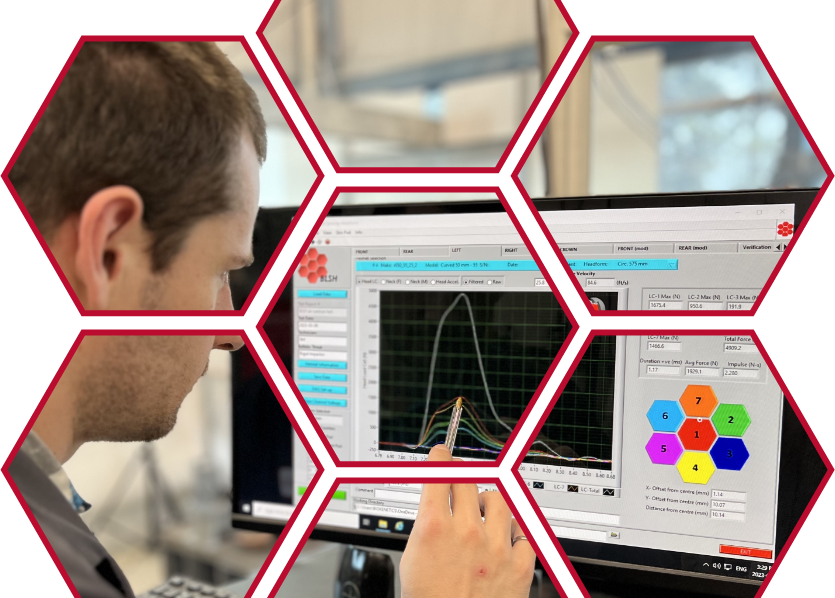Impact injury research forms the bedrock of safety research, especially when guided by Biokinetics’ decades of consulting and testing experience. As a way of assessing the factors that contribute to impact injuries, as well as how specific variables affect the severity and long-term effects on the human body, impact injury research helps to establish an invaluable foundation for safety and prevention strategies.
At Biokinetics, we’re proud to put safety at the forefront of all we do. From injury biomechanics to impact attenuating material properties, our comprehensive research and test methodologies aim to advance our understanding of impact injuries and develop effective strategies for prevention and mitigation. Below, we’ll highlight some of the key factors that inform impact injury research. Read on to learn more.
Injury Biomechanics
Injury biomechanics refers to the study of mechanical forces and their effect on the human body. When combined with the study of kinetics, or bodily movements, the modes and mechanisms of injuries can be better understood. At Biokinetics, we focus intensively on threats and hazardous environments across multiple applications that could result in injury or fatality to humans, including ballistics, professional sports, blunt force trauma, drone impacts and more. By studying factors such as energy transfer, force distribution, and injury tolerance, our team gains valuable insights into the mechanisms and severity of injury and how they can be mitigated through applied protective equipment and mitigating approaches.
Impact Material Properties
The material properties of protective armour and equipment play a key role in determining their overall effectiveness when it comes to mitigating injury. Through controlled testing and analysis, Biokinetics evaluates the mechanical properties of materials, including their stiffness, strength, and impact energy absorption capabilities to determine the viability of products and how to enhance existing or proposed designs for optimal performance.
Impact Dynamics
It is impossible to form a valid understanding of the risk of injury without an accurate assessment of impact dynamics. The impact speeds, kinetic energy, angle of incidence, and load distribution are analyzed in addition to the body’s dynamic response including force distribution, rate of deformation, force distribution and energy absorption. These, plus other factors, help inform the capacity for causing harm from simulated real-world impact scenarios, and in combination with the biomechanical responses, insight can be gained into the mechanisms of injury to identify opportunities for injury reduction interventions.
Target Anatomy and Physiology
Human anatomy and physiology are two critical factors that inform injury research. The Biokinetics team have developed test surrogates to replicate human biofidelity as closely as possible to identify vulnerable body regions and mechanisms of injury associated with impacts. Analyzing injury patterns and mechanisms enables researchers and manufacturers to develop targeted mitigating technologies as well as protective measures and standards to reduce risk and keep everyone safe.
Clinical Data and Injury Epidemiology
When evaluating impact injury data, it is important to take a holistic approach that encompasses both long-standing points of reference as well as new information that highlights the prevalence, severity, and patterns of impact injuries across different populations and environments. While certain scenarios may be narrowly focused, injury research often looks at both broad and specific data points to form the most comprehensive understanding possible. This allows for the creation of robust preventative strategies and interventions to reduce the incidence and severity of injuries in sports, automotive safety, occupational settings, and other contexts.
Leading the Way For a Safer Tomorrow
Founded in 1975 Biokinetics is an Ontario based team of injury biomechanics experts dedicated to the prevention of impact injuries and the reduction of injury risk. We offer access to industry-leading testing facilities and highly trained engineers who conduct thorough risk and performance analysis as well as ballistic and blunt trauma testing on helmets, body padding, personal body armour and more.
Learn more about our impact injury research services by contacting our team directly today!

